Snorting
To charge the batteries the diesel engine must run driving the generator.
The submarine therefore had to withdraw from its operating area to a safer
area and there surface. The engines require much air and the exhausts must
be let out from the boat.
1953 the U3 was modified and a snorting system installed allowing less
exposure of the boat when charging the batteries. But as the running engines
were noisy the boat had to relocate to a safer area.
A snort mast consisting of a two hoistable pipes was installed aft in the
bridge fin. One pipe for letting air into the boat the other
for expelling the exhausts. The snort head both separated
air from exhausts and closed automatically when the head
dipped below the surface.
The snort head design was
influenced by a German type XXI submarine,
U3503
that was sunk by its own crew outside Gothenburg in the
spring 1945. Swedish authorities salvaged this boat and its
technology gave several ideas to Swedish submarine
designers.
The salvaging of
U3503
was a great technical achievement. She was brought to surface using
HP-air from three Swedish submarines.
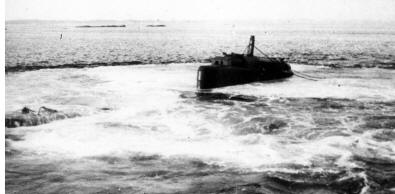
The German U3503 surfacing at the salvage operation August 1946 outside Gothenburg. Photo U3 archives.
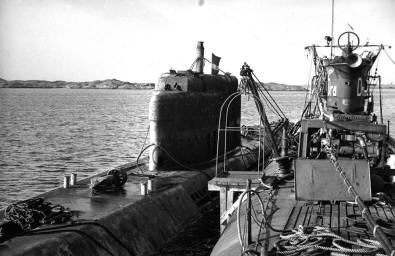
U3503 and HMS Draken I at the salvage operation 1946. Extra HP-air equipment can be seen on the deck of the Draken. Photo U3 archives.
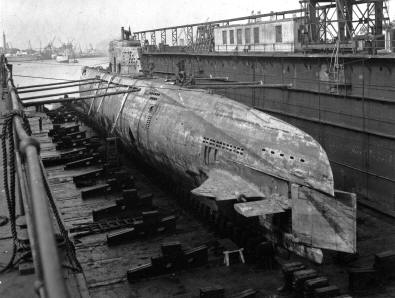
U3503 in a floating dock in Gothenburg. Photo U3 archives.
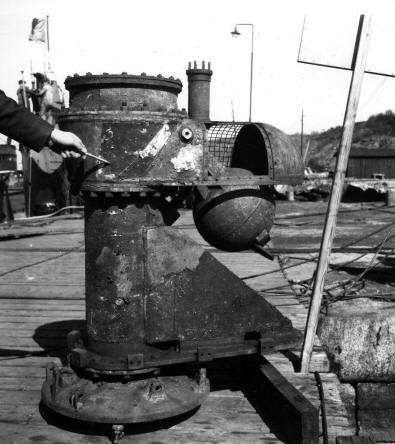
U3503 snort head. Photo U3 archives.
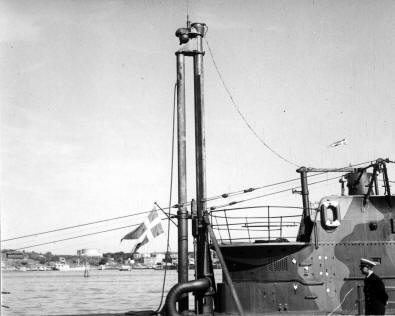
HMS Draken testing the snort from U3503. Photo U3 archives.
Snorting in wintertime was tough as much cold air entered the boat. Further
it was not without risks as the snort head could freeze in an open position
causing flooding. In 1954, U3 was forced to bottom after a flooding. It was
a great undertaking to stop the flooding, regain balance and blow main
ballast tanks to surface.
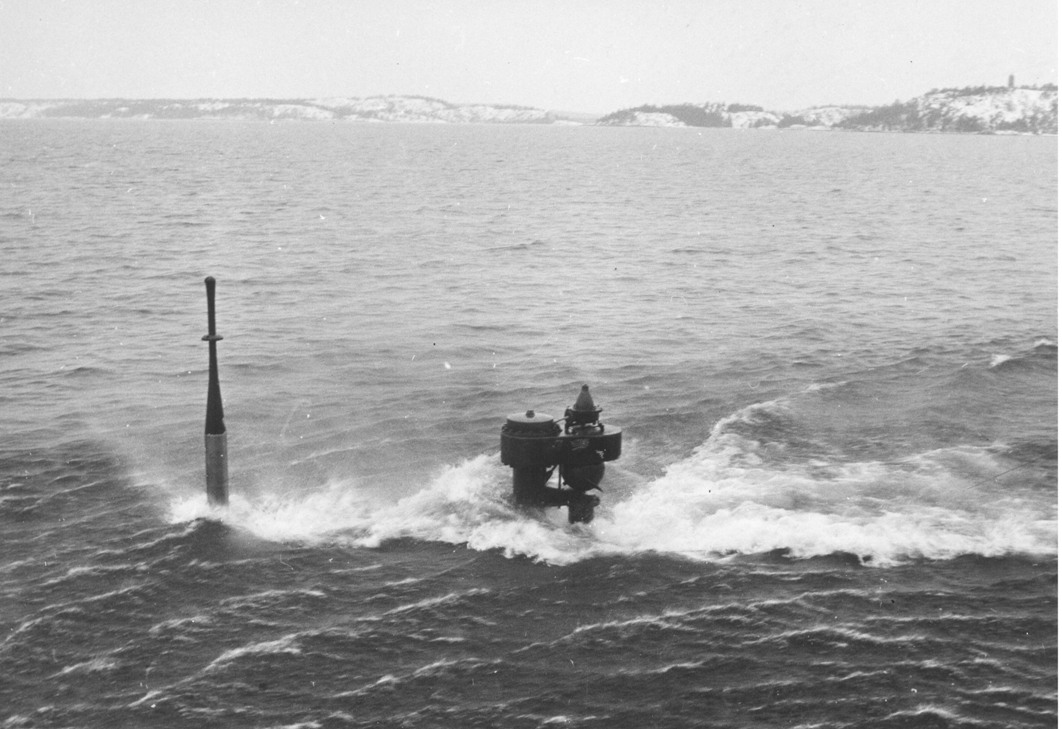
HMS Sälen
(the Seal) snorting. Photo U3 archives.
Start of snorting
Snorting started
with hoisting and draining of the mast. The exhaust line was first drained
and valves were then opened. The engines started with their camshafts in
”snorting position” and at the start the quick closing valves were opened.
At a successful start, the exhausts were blowing out remaining water
and cold air flushed the boat interior.
The submarine interior acted as a buffer volume allowing running the
engines for a very short period with closed snort head. The sub atmosphere
pressure was then sinking which was clearly felt by the eardrums. These
changes were fairly rapid and it became a problem for the submariner to
equalize his ear pressure. It was important to quickly force the boat up to
stop the pressure from dropping below 800 hPa. Should the pressure sink
below this value it was of outmost importance to stop the engines
immediately. Such a crash stop resulted in a very hot engine and temperature
in the engine room would rise to sauna like levels.
Due to high noise levels from the running engines the hydrophone
listening capacity was hence limited. The submarine therefore temporarily
shut down the engines to facilitate better listening conditions. To be able
to cover the after listening angle were the hydrophones were deaf, the
submarine diverted from its straight course to remedy this shortcoming.